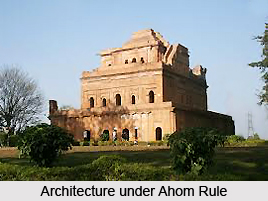 Susenghphaa, also known as Pratap Singha, was an Ahom ruler who ruled over the kingdom from 1603 to 1641 AD. He was coronated at a comparatively old age and thus he was also called as Burha Raja or old king. During his reign Ahom kingdom expanded greatly towards the west. The rule of Susenghphaa was also marked by conflicts with Mughals, reorientation of village economy which was designed by Momai Tamuli Borbarua and expansion of Paik system for the reorganization of the kingdom. Expansion of the kingdom towards the west was carried out by the two offices of the king namely the Borphukan and the Borbarua. Susenghphaa has also formed alliances with the rulers of Koch Hajo that thwarted Mughal expansion. The administrative structure formed by him lasted till the end of Ahom rule.
Susenghphaa, also known as Pratap Singha, was an Ahom ruler who ruled over the kingdom from 1603 to 1641 AD. He was coronated at a comparatively old age and thus he was also called as Burha Raja or old king. During his reign Ahom kingdom expanded greatly towards the west. The rule of Susenghphaa was also marked by conflicts with Mughals, reorientation of village economy which was designed by Momai Tamuli Borbarua and expansion of Paik system for the reorganization of the kingdom. Expansion of the kingdom towards the west was carried out by the two offices of the king namely the Borphukan and the Borbarua. Susenghphaa has also formed alliances with the rulers of Koch Hajo that thwarted Mughal expansion. The administrative structure formed by him lasted till the end of Ahom rule.
Coronation of Sukhamphaa
In 1603 when the Ahom king Sukhamphaa died and his throne was succeeded by his son Langi Gohain and the ministers Chaopet Burhagohain, Tonkham Borgohain and Banjangi Borpatrogohain made him the Swargadeo of the kingdom. His age was 58 at the time and the Tai priests gave him the name Susenghphaa. He married the Jaintia princess and subsequently involved in a conflict with the Kachari kingdom. In 1608 he married the daughter of Parikshit Narayan to establish alliance with the rulers of Koch Hajo.
Durga Puja during Sukhamphaa
The famous historian Late Benudhar Sharma stated that Durga Puja celebration with earthen idol started in Assam during the rule of Sukhamphaa. The king was highly inspired by the grandeur with which the festival of Durga Puja was celebrated by the King Naranarayan of Kochbihar. Sondar Gohain, who once served as the hostage of Koch Raja narrated this to Sukhamphaa. Thus, he sent his artisans to Kochbihar for learning the art of idol making. Afterwards, Sukhamphaa organised the first grand Durga Puja of Ahom kingdom in Bhatiapara near Sibsagar. Earthen idols were for the first time worshipped in Assam in the Durga Puja celebration which includes huge gatherings.
Expeditions of Sukhamphaa
The conflicts of Koch Hajo and Kochbihar brought the Mughals and subsequently the Ahoms into it in the year 1615. This war ended in 1682 when the Ahom king Supaatphaa succeeded in removing the Mughal influence on Assam. Treaty of Asurar Ali was signed during the rule of Susenghphaa. This conflict however ended the hostilities of Ahoms and Kacharis and peace was restored in the kingdom for the confrontation of the common enemy. With the weakening of Koch Hajo state due to the attack of the Mughals, the Ahom kingdom expanded towards west and Langi Panisiya, the first Borphukan, was appointed by Susenghphaa as his western viceroy. His office was based at Kajali and he was made in charge of the territories to the west of Kaliabor. Susenghphaa also assigned territories to Borgohain, Burhagohain and Borpatrogohain, the three classes of ministers. A new office was created namely Borbarua, for controlling the parts of the kingdom that was not included in the jurisdiction. Momai Tamuli Borbarua was the first Borbarua of the kingdom who brought about great changes in the village economy and the Paik system.
Susenghphaa had distributed the population of the kingdom to strengthen his rule. The remnants of the Bhuyan chieftains, the Bhuyans, were moved to the south bank of the Brahmaputra from the north which decreased their power. He also sent around eight thousand families to the desolate lands of Marangi area. Marangi was recovered by Suhungmung from the Kachari kingdom. Susenghphaa had also created a number of new posts namely Jagiyal Gohain, Rohiyal Barua and Kajalimukhiya Gohain. He was also popularly known as Buddhi Swarganarayan for his wisdom, political intelligence and organizational capability. He also contributed in the development of backward classes and construction of tanks, embankments and roads. Susenghphaa reigned for 38 years over the kingdom and died in the year 1641.



















